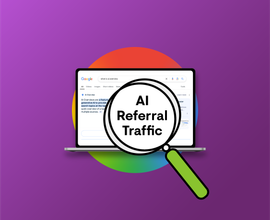Attracting Ride-or-Die Customers: 3 Key Lessons from Peloton’s Meteoric Rise
What's the strategy behind Peloton's marketing success? Take a look at how they grew their company around a community of obsessive, ride-or-die users.
Three years. That’s how long it took Peloton to go from scrappy startup to market behemoth with nearly 500,000 global riders and 8+ million total workouts.
Boasting an impressive 96% retention rate and an average NPS score of 91, Peloton has cultivated an almost obsessive, cult-like community of users. In fact, their users are so eager to participate in the Peloton community that engagement rates are off the charts.
Peloton's most recent accomplishments to date include an 810% increase in Add to Carts and an 844% increase in bike purchase, due in large part to strategic efforts from their brand and acquisition teams.
So, how exactly did Peloton grow so big so fast? How do they utilize marketing to galvanize and inspire their customers? That answer is a three-parter.
Brand and Acquisition Work Together
It’s a common problem: various teams across your organization are stuck in siloes — for example, the brand and acquisition teams work in parallel, but not in concert. Brand approves creative. Acquisition deploys and measures it. Repeat.
These separate efforts are necessarily disconnected, which means that neither team is fully empowered to make as big an impact as they otherwise might. If brand and acquisition teams were more integrated, they might be able to amplify one another’s efforts — and results.

How did Peloton address this problem? With the holiday season approaching, it was the perfect time to go big with a new approach. By improving reporting and communication between acquisition and brand, the brand and acquisition teams at Peloton created what they call the “virtuous cycle,” an iterative process that starts with a creative brief and ends with — well, it doesn’t end.
This cyclical holiday campaign allowed the two teams to unite behind a round robin process of collecting insights and channeling it into action. After examining performance metrics they could make adjustments to the ongoing campaign, tweaking content whenever necessary.
How did they do that?
A "Virtuous" Cycle of Revising Content
With the typical approach to content, once it’s done, it’s done. After content launches, it’s rarely touched up or — gasp — substantially revamped in accordance with its performance. But is that really the best solution?
The best way to measure good content is to, well, go back to the data. We might feel good about a blog post or a landing page, but if users aren’t engaging, is the content providing any value? Luckily for the marketers at Peloton, the system they set up, this “virtuous cycle,” allowed them to constantly retouch content.

After rolling out this new strategy, Peloton saw an 810% increase in Add to Carts, an 844% increase in bike purchase, and an 8% reduction in purchase cap. Results like that are hard to argue with. It’s clear from Peloton’s story that the more you know — and the more you act on that knowledge — the more robust your returns.
Addressing Customers at Every Stage of the Buyer’s Journey
To most effectively influence a prospective customer’s decision, you’ve got to know where they’re coming from. That’s where the buyer’s journey comes in — from early to late stage, the more you understand your customer’s mindset, the stronger your chances of encouraging a conversionConversion
Conversions are processes in online marketing that lead to a defined conclusion.
Learn more.
Peloton mapped their buyer’s journey into five major segments: intrigued with the product, infatuated with the dream of bike ownership, pragmatic about logistical concerns, excited by placing their order, and apprehensive until its delivery.
All of this was mapped out into a richly detailed emotional graph, expressing how Peloton customers feel and think at every stage of the buying process.
But once all that is through, there’s a new phase: addiction to the workout. Peloton doesn’t just sell a product: they provide a constant stream of workout content for all their users, in perpetuity.

That means that once the purchase is over, the buyer’s journey continues for as long as they use the bike, while Peloton pushes new content and revamps existing offerings to drive higher usage and brand loyalty.
This is the kind of smart content strategy that can drive huge returns for any company. With some extra collaboration, a close attention to detail, and a commitment to supporting content throughout its lifecycle, you can apply the Peloton approach to your organization — with potentially huge results.







